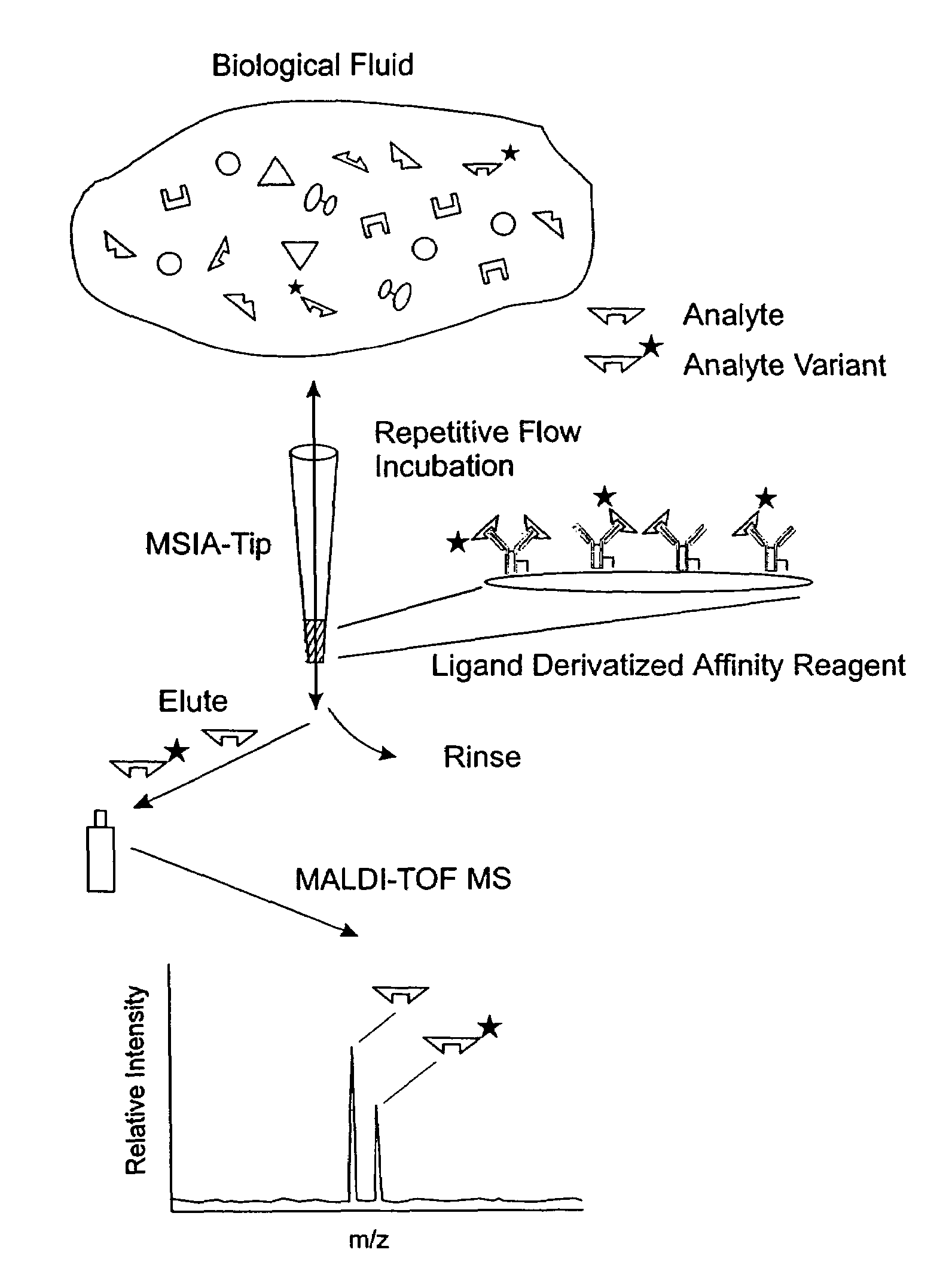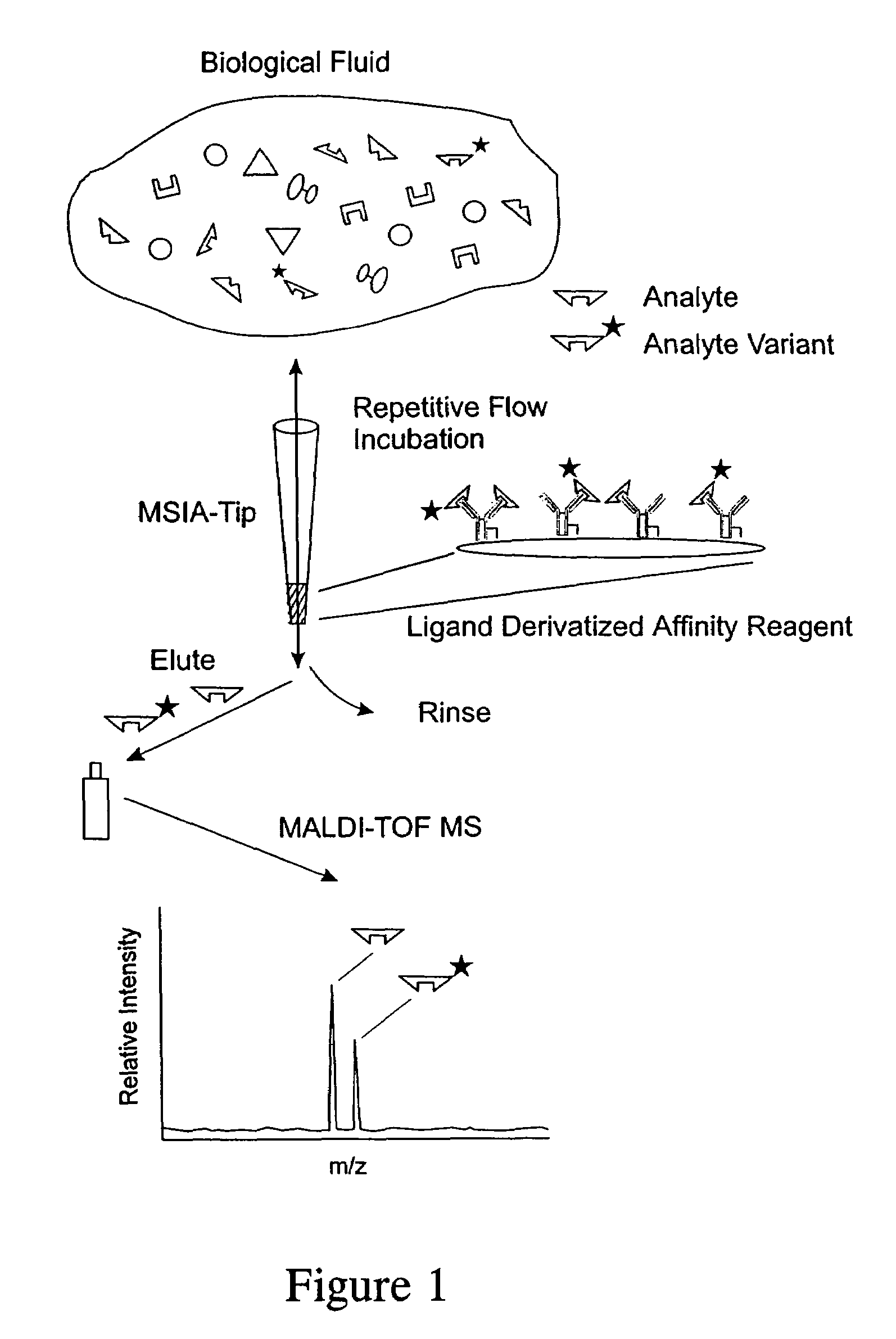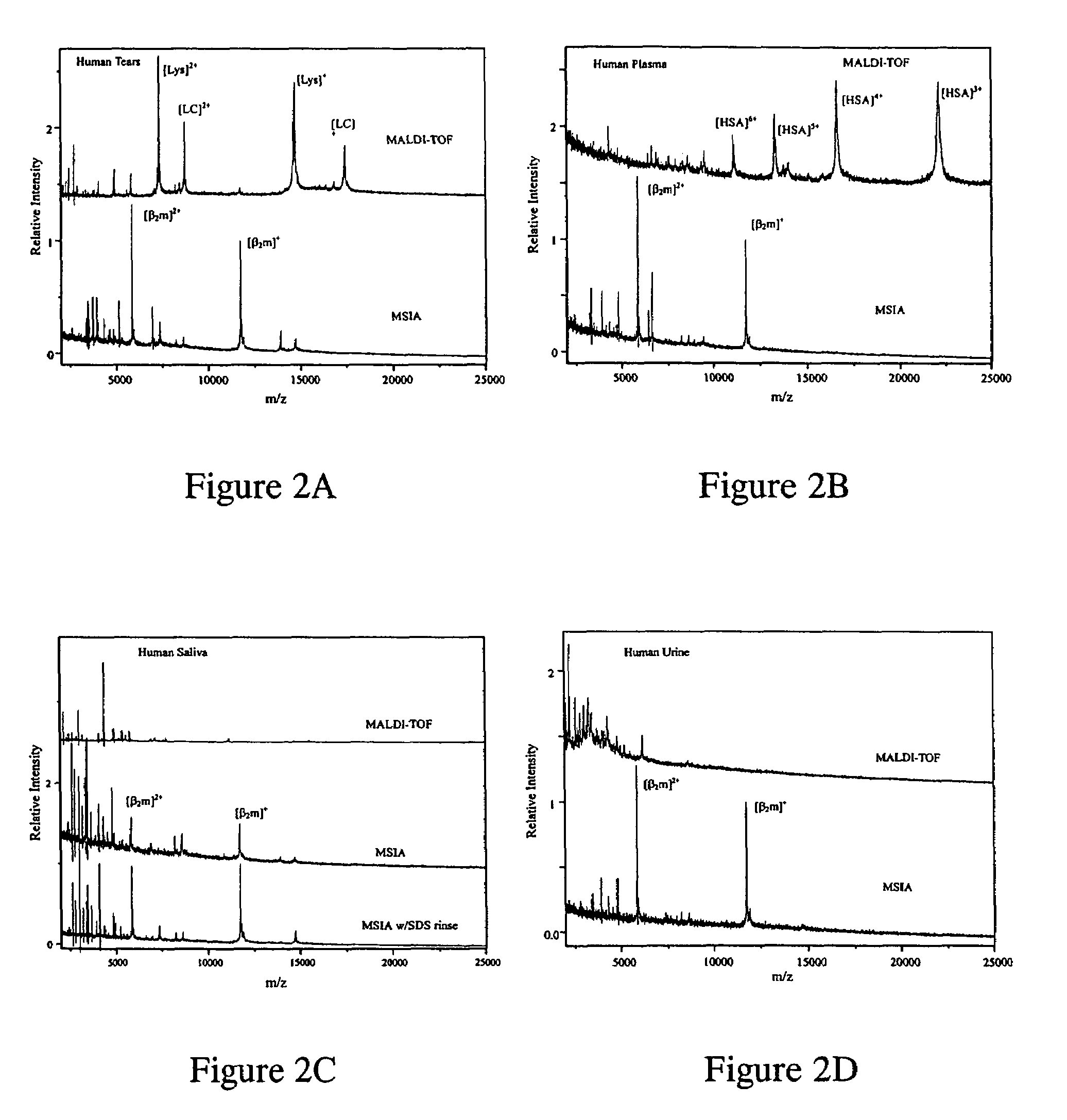Mass spectrometric immunoassay analysis of specific proteins and variants present in various biological fluids
a mass spectrometric and immunoassay technology, applied in the field of proteomics and diagnostics, can solve the problems of inability to qualitatively differentiate between the wild type and variants of sub>2/sub>m, and achieve the effect of linearity, accurate and quantitative dynamic rang
- Summary
- Abstract
- Description
- Claims
- Application Information
AI Technical Summary
Benefits of technology
Problems solved by technology
Method used
Image
Examples
example 1
MSIA Analysis of Specific Proteins Present in Biological Fluids
[0037]The general MSIA approach is shown graphically in FIG. 1. MSIA-Tips, containing porous solid supports covalently derivatized with affinity ligands are used to extract the specific proteins and their variants from biological samples by repeatedly flowing the samples through the MSIA-Tips. A mass-shifted variant of the specific protein, present in the samples at a constant concentration, is co-extracted with the endogenous protein and variants, and is used as a quantitative internal reference standard—normalizing all incubations, extraction, and subsequent rinsing, elution / deposition and mass spectrometric steps in the MSIA process. Nonspecifically bound compounds are rinsed from the MSIA-Tips by using a series of buffer and water rinses, after which retained proteins, variants and the internal reference standard are eluted from the MSIA Tip directly onto a MALDI-TOF target. MALDI-TOF mass spectrometry then follows,...
example 2
MSIA-Tip Manufacture
[0038]Affinity reagents for the MSIA-Tips were manufactured to the specifications of commercially available pipettor tips (Coast Scientific, CA, PT 0340-BYN) by using annealing molds made of stainless steel (type 446; 100-150 holes of 0.071 inch (entrance) per mold; 2-degree taper, polished and treated with graphite release agent). The molds were loaded with soda lime glass spherical beads (150-200 μm; 75% SiO2, 15% Na20 and 10% CaO; Sigma, St. Louis, Mo.) and annealing was achieved in an argon-backfilled furnace by ramping the temperature from 772° C. (equilibrated, t=O) to 800° C. (t=3 minutes; equilibrate for one-minute). Upon completion of the ramp-anneal, the molds were immediately removed from the furnace and the affinity reagents taken out. The process yielded affinity reagents with high-flow characteristics and appropriate bore and taper to fit the entrance of the pipette tips (room temperature affinity reagent dimensions: 0.061 in. (entrance), 0.092 in. ...
example 3
MSIA of Biological Fluids
[0040]All fluids were obtained immediately prior to use; protease inhibitor cocktail (PIC, Protease Inhibitor Cocktail Set III, Calbiochem, La Jolla, Calif.) was added immediately in order to minimize possible proteolytic degradation of β2m.[0041]Tears: Human tears were collected by washing the eye with doubly distilled water (ddH2O) and collecting the rinse. A 20 μL of the eye rinse was mixed with 180 μL HBS buffer and used as stock tears solution. This stock was further diluted by a factor of ten with either water (for a standalone MALDI-TOF analysis) or HBS buffer (for MSIA analysis).[0042]Plasma: A 44.7 μL of human whole blood was collected from a lancet-punctured finger using a heparinized microcolumn (Drummond Scientific Co., Broomall, Pa.), mixed with 205 μL HBS buffer and centrifuged for 30 seconds (at 7,000×g) to pellet the red blood cells. A 50 μL aliquot of the supernatant was mixed with 200 μL HBS and the resulting solution was drawn for MSIA; an...
PUM
| Property | Measurement | Unit |
|---|---|---|
| concentrations | aaaaa | aaaaa |
| temperature | aaaaa | aaaaa |
| pH | aaaaa | aaaaa |
Abstract
Description
Claims
Application Information
 Login to View More
Login to View More - R&D
- Intellectual Property
- Life Sciences
- Materials
- Tech Scout
- Unparalleled Data Quality
- Higher Quality Content
- 60% Fewer Hallucinations
Browse by: Latest US Patents, China's latest patents, Technical Efficacy Thesaurus, Application Domain, Technology Topic, Popular Technical Reports.
© 2025 PatSnap. All rights reserved.Legal|Privacy policy|Modern Slavery Act Transparency Statement|Sitemap|About US| Contact US: help@patsnap.com



